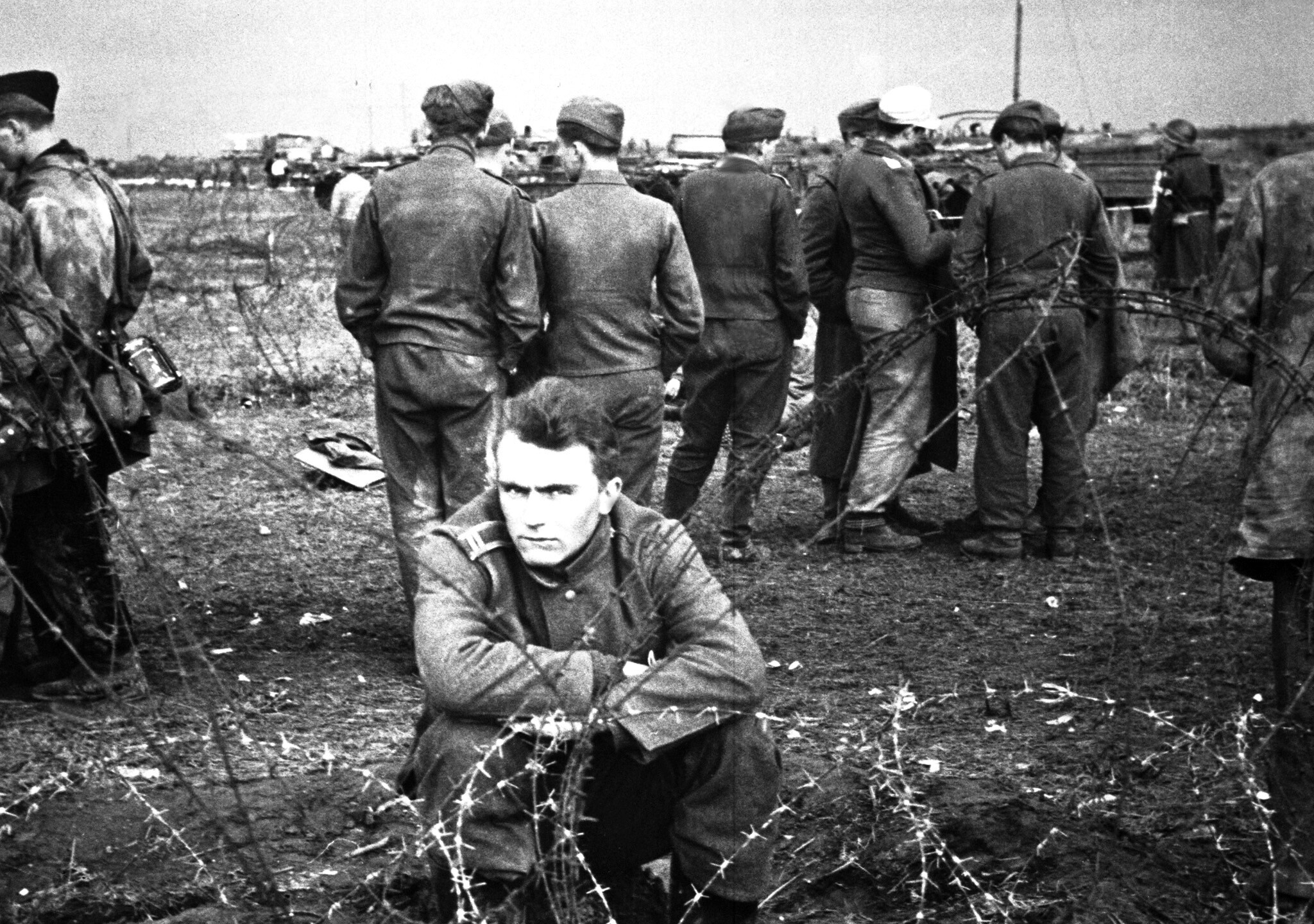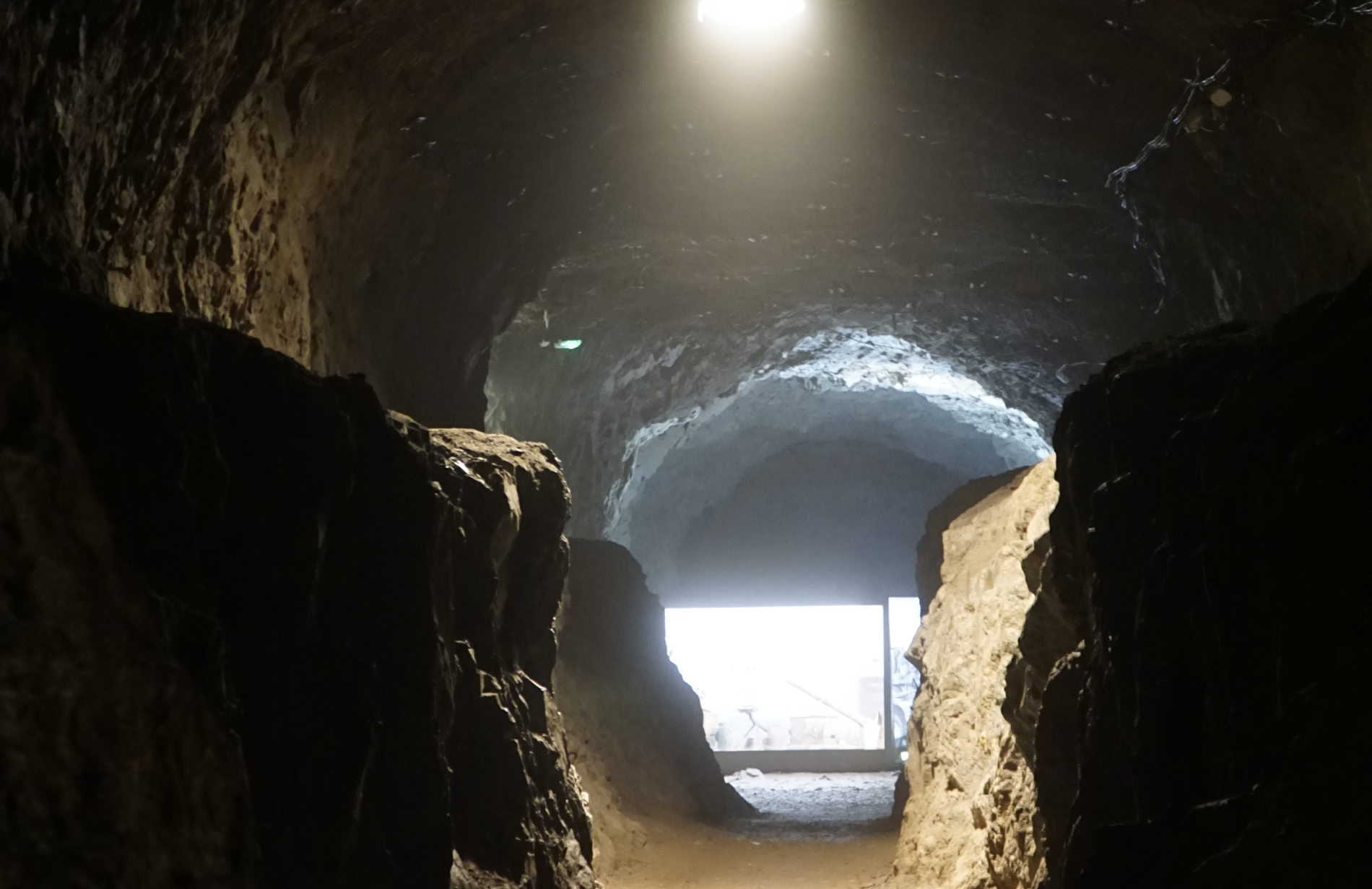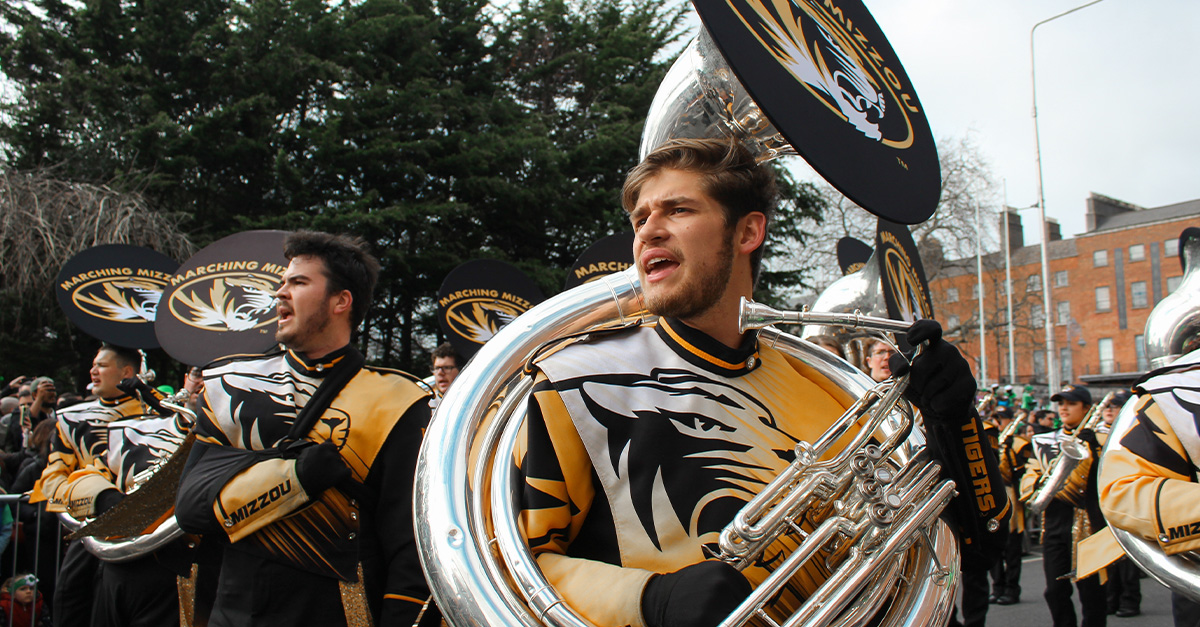WWII's Greatest Secret
Near the end of WWII, the Third Reich hid their greatest secret within Poland’s Owl Mountains—a network of tunnels with a mysterious purpose. It was a bizarre project with the code name "Riese".

Underground Mysteries
Project Riese—meaning "giant" in German—began with the Führer himself. In 1943, he organized the construction of underground structures in Lower Silesia, which is now Poland.
 Ministry of Foreign Affairs of the Republic of Poland, Flickr
Ministry of Foreign Affairs of the Republic of Poland, Flickr
But Why?
However, the true purpose of these unbelievable tunnels has remained elusive to this day—stamping one large question mark on this particular part of WWII history. What was the real reason behind these incredibly expensive and enterprising complexes?
 Ministry of Foreign Affairs of the Republic of Poland, Flickr
Ministry of Foreign Affairs of the Republic of Poland, Flickr
Speculation And Theories
There has been much speculation about these underground wonders. According to certain sources, these tunnels helped comprise a part of the Führer's Headquarters. However, this isn't the only theory.
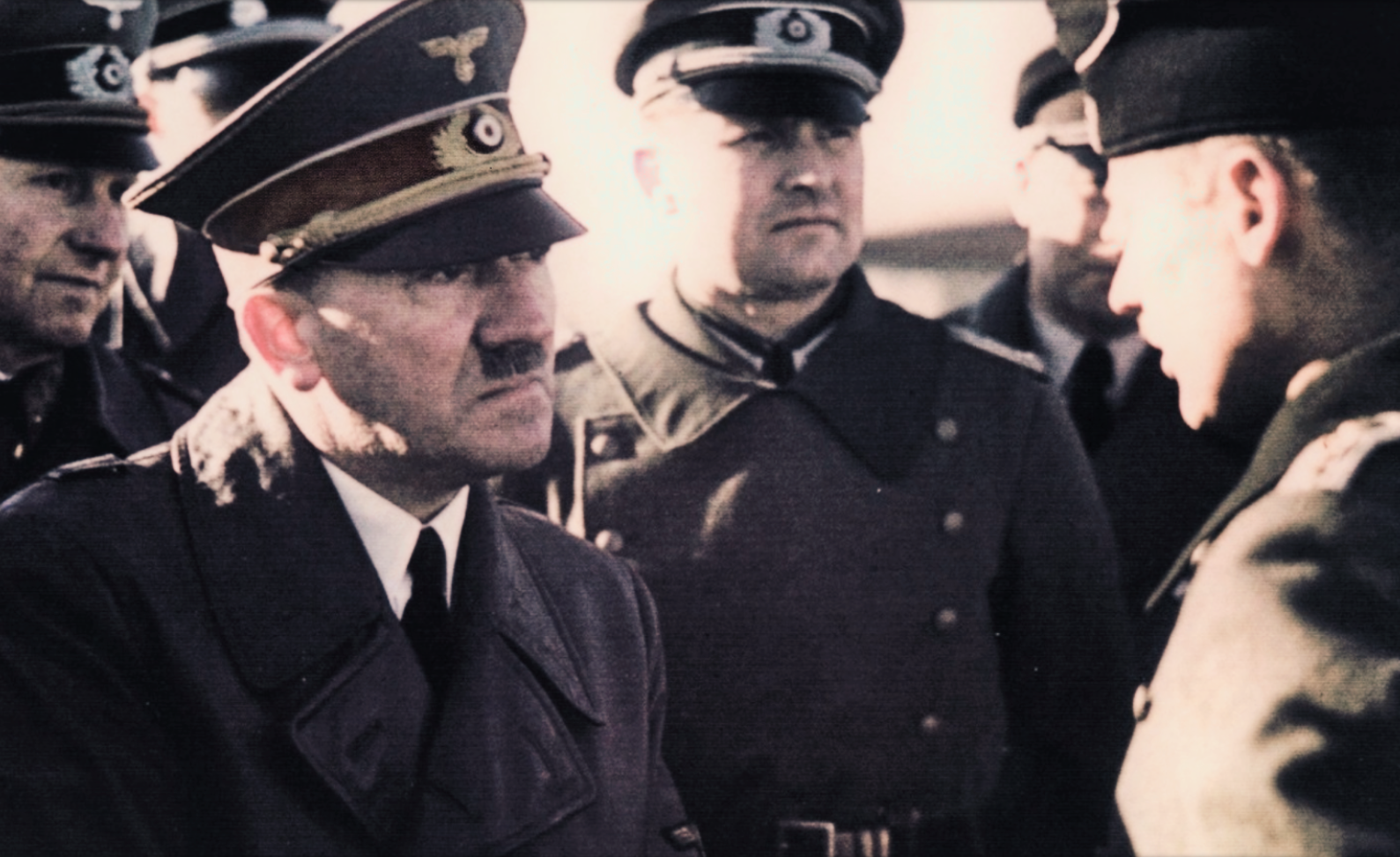 Unknown author, Wikimedia Commons
Unknown author, Wikimedia Commons
Speculation And Theories
In addition to serving as a base or headquarters, some believe that Project Riese was an expression of Germany's arms industry, and that the tunnels hosted manufacturing facilities, as well as a command center.
But whatever the truth may be, these historical sites still have shocking stories to tell.
 Ministry of Foreign Affairs of the Republic of Poland, Flickr
Ministry of Foreign Affairs of the Republic of Poland, Flickr
A Response To Danger
Though so much of Project Riese is shrouded in mystery, there are still some facts that have been unearthed. Let's take a deeper dive into its dark history.
Beginning in 1942, the Allies targeted Germany with an increasing number of air raids. This pushed the Third Reich to make an important decision.
 Chmee2, CC BY-SA 3.0, Wikimedia Commons
Chmee2, CC BY-SA 3.0, Wikimedia Commons
Looking For A Safe Place To Hide
In order to keep its armaments safe, the Third Reich moved its infrastructure to more secure locations. This, of course, included Lower Silesia, with its bountiful resources and history of mining.
With the aim of protecting the Third Reich's arms factories, the decision to hide them in underground bunkers was an ideal solution.
The Very Beginning
The seeds of Project Riese were first planted in September 1943. This led to the founding of the Silesian Industrial Company—or the Industriegemeinschaft Schlesien—which would be responsible for construction operations. From here, the plan unfolded swiftly.
 Ministry of Foreign Affairs of the Republic of Poland, Flickr
Ministry of Foreign Affairs of the Republic of Poland, Flickr
Putting POWs To Work
There were already camps in place to accommodate forced laborers by November of the same year. They came from several places—POWs from Italy, the Soviet Union, and Poland. The tasks and goals set before them were not for the faint of heart.
The Required Manpower
The POWs took on physically arduous responsibilities. Bringing Project Riese to life required major manpower. It was so much more than just excavating parts of the mountain.
 Ministry of Foreign Affairs of the Republic of Poland, Flickr
Ministry of Foreign Affairs of the Republic of Poland, Flickr
Construction Begins
Roads, bridges, and railways had to be constructed to support the building process—and that wasn't all. These workers had to raze thousands of trees and collect materials.
 Wulfstan, CC BY-SA 3.0, Wikimedia Commons
Wulfstan, CC BY-SA 3.0, Wikimedia Commons
Laying The Groundwork
POWs worked themselves to the bone. They dug out drainage ditches and reservoirs, stitching together a system with many moving parts. They also built the foundation for sewage systems by constructing dams and harnessing a water supply. But the groundwork they laid was just the beginning.
 Ministry of Foreign Affairs of the Republic of Poland, Flickr
Ministry of Foreign Affairs of the Republic of Poland, Flickr
Tunneling Through A Mountain
Today, these complexes can be found inside the Owl Mountains in Poland. Their existence required a major excavation of thousands of cubic meters of concrete. But this was no simple feat.
 Ministry of Foreign Affairs of the Republic of Poland, Flickr
Ministry of Foreign Affairs of the Republic of Poland, Flickr
Keeping It Safe
Snaking through a mountain required a lot of explosives and drilling. An unbelievable amount of rock had to be moved. Once the tunnels had been dug out, they had to be properly supported by steel and concrete. But such specialized work couldn't be completed by the POWs alone.
Bringing In The Experts
In order to ensure the underground structures were safe, specialists had to be brought in. They lent their expertise and knowledge to the operation, giving their stamp of approval where it was needed. The POWs, however, had to put their lives on the line and shouldered the immense physical toll the project demanded.
Working With Hard Materials
Excavating these massive tunnels was made all the more difficult because of the type of rock they were working with: gneiss. Gneiss is a high grade metamorphic rock, which is incredibly hard. But this also had its benefits.
The Advantages Of Gneiss
Though the rock was hard to bore through, it also meant that it lent the structures greater stability. There was also more flexibility when it came to the size of the tunnels.
 Lilly M, CC BY-SA 3.0, Wikimedia Commons
Lilly M, CC BY-SA 3.0, Wikimedia Commons
Soaring Heights
Thanks to the hard rockface, some tunnels could reach incredible heights of up to 12 meters. Additionally, the material offered better protection in the case of air raids.
However, construction wasn't always smooth sailing.
 Ministry of Foreign Affairs of the Republic of Poland, Flickr
Ministry of Foreign Affairs of the Republic of Poland, Flickr
A Typhus Epidemic
A disaster blindsided the project in December 1943 when a devastating typhus epidemic spread among the POWs. This illness was yet another layer of suffering on top of the poor conditions they already had to endure.
Horrific Working Conditions
Project Riese had no mercy for the POWs working to establish it. The standards of hygiene were abysmal, and they were all poorly fed and worked to the bone. With the added stress of the typhus epidemic, the amount of work getting done slowed to a worrisome crawl.
 Ministry of Foreign Affairs of the Republic of Poland, Flickr
Ministry of Foreign Affairs of the Republic of Poland, Flickr
An Unknown Number Of Fatalities
Over the course of the war, the exact number of fatalities that occurred beneath the shadow of this project is still unknown. However, there are even more disturbing details about these forced laborers.
 Chmee2, CC BY-SA 3.0, Wikimedia Commons
Chmee2, CC BY-SA 3.0, Wikimedia Commons
Not Fast Enough For The Führer
By the spring of 1944, the Führer was not pleased with the amount of work completed on the project. And so another chilling decision was made: He handed the reins over to Organisation Todt. Moreover, inmates from concentration camps would face recruitment and be put to work.
 Unknown Author, Wikimedia Commons
Unknown Author, Wikimedia Commons
They Recruited Men From Auschwitz
Because Project Riese is so steeped in mystery, there is a lot of information that has been lost to time—much in regard to the poor men bringing it to fruition. However, at the very least, there were around 13,000 forced laborers—and the majority of them had already spent time in the Auschwitz concentration camp.
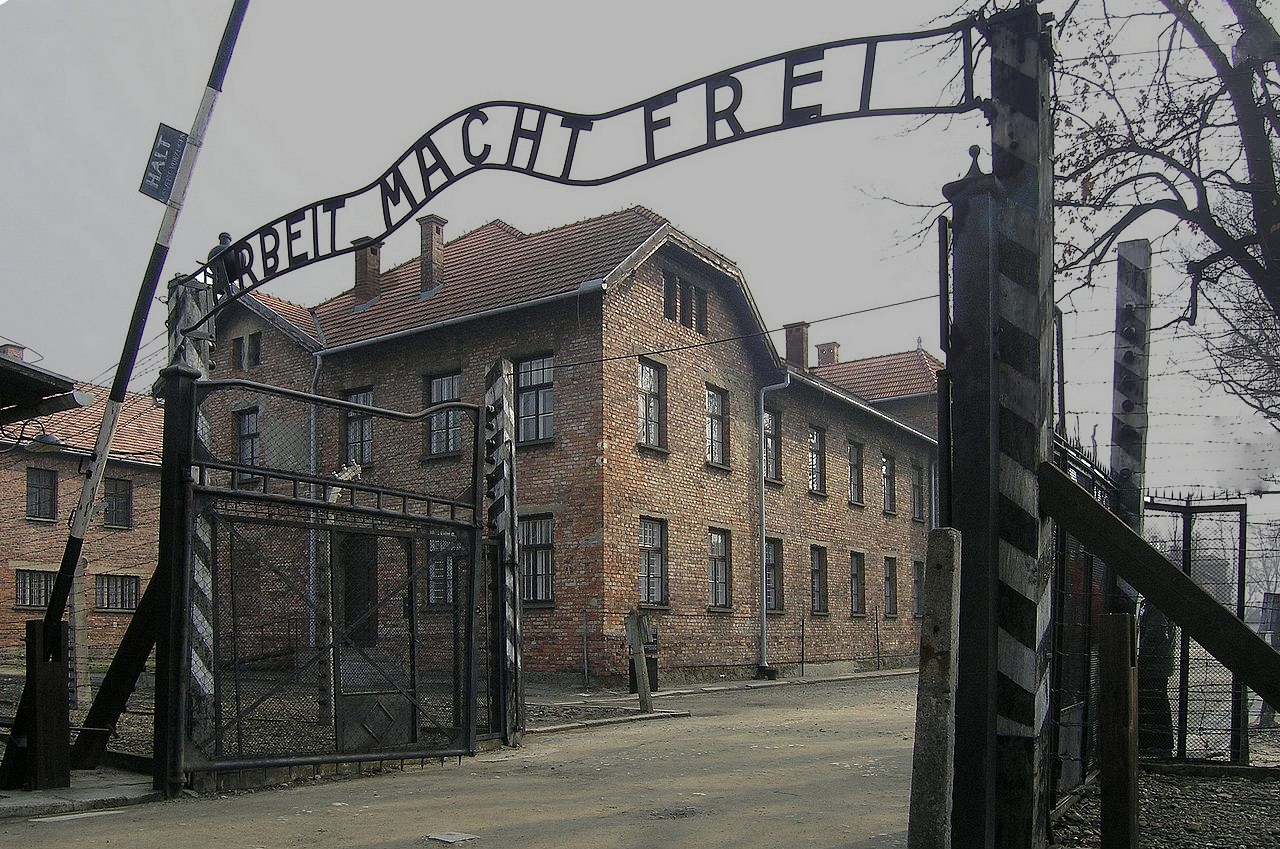 Dnalor_01, CC BY-SA 3.0, Wikimedia Commons
Dnalor_01, CC BY-SA 3.0, Wikimedia Commons
They Were All Jewish
According to documentation, 8,995 of these inmates were properly identified—and all of them were Jewish, with 70% of them coming from Hungary. But they had simply moved from one horror show to another.
 German Federal Archives, CC-BY-SA 3.0, Wikimedia Commons
German Federal Archives, CC-BY-SA 3.0, Wikimedia Commons
A High Mortality Rate
The death toll that came at the hands of Project Riese was undoubtedly high—and for many unfortunate reasons. Workers faced illness, starvation, and malnutrition. Then there was the sheer physical toll. Working in the underground tunnels was perilous and the German guards treated them horribly.
 Ministry of Foreign Affairs of the Republic of Poland, Flickr
Ministry of Foreign Affairs of the Republic of Poland, Flickr
They Sent Them Back To The Concentration Camp
Sometimes, these forced laborers from Auschwitz were so tired and worn out that they were no longer considered an asset. The solution? To send them back to the concentration camp from which they came. However, there were some who tried to escape on their own.
Executions
Those who tried to flee their incarceration while working for Project Riese paid the ultimate price. On record, there were 14 executions: Men who had tragically tried to escape, but failed.
Though accurate data is not available, an estimated number of total fatalities sits at about 5,000.
A Second Wave Of Typhus
Typhus truly had its grip on the workers for Project Riese in 1944, because it struck again as the year came to a close. However, the end of WWII itself was already approaching. Only months later, the camps began evacuating.
Evacuating The Camps
In February 1945, work on Project Riese began to cease with the evacuation camps—the last remnants of its efforts finally giving up by the end of April.
 Chmee2, CC BY-SA 3.0, Wikimedia Commons
Chmee2, CC BY-SA 3.0, Wikimedia Commons
Giving Up The Project
Project Riese was never fully realized and abandoned once the front line approached. In fact, construction had barely even begun. However, the project wasn't the only thing abandoned.
 Ministry of Foreign Affairs of the Republic of Poland, Flickr
Ministry of Foreign Affairs of the Republic of Poland, Flickr
Leaving Victims Behind
Even some of the workers were forsaken at the camps and work sites—with the majority of them extremely sick. They were left for the Red Army to find in May 1945. However, some believe that a vast number of the POWs met even darker fates.
 Ministry of Foreign Affairs of the Republic of Poland, Flickr
Ministry of Foreign Affairs of the Republic of Poland, Flickr
The Mysterious Fates Of The POWs
With the entrances to this subterranean complex destroyed, many have speculated about what the bunkers had been hiding and where it had all gone by the end of WWII. On top of that, though, there was an even more pressing question: What had happened to most of the POWs—the many thousands of them?
Where Are The Mass Graves?
You see, the location of the mass graves of the many workers remains a mystery. Some sources wonder whether they were trapped in the complex or buried beneath the rubble when the bunkers were destroyed. For decades, the remnants of Project Riese have become a breeding ground for shocking conspiracy theories—and for good reason.
The German Architect Steering The Ship
To understand the birth of these conspiracy theories, we must rewind for a moment—and introduce a key player named Albert Speer. German architect Albert Speer was the man in charge of Organisation Todt. When he gained control of Project Riese, he focused his efforts on Książ Castle.
 Charles Alexander, Wikimedia Commons
Charles Alexander, Wikimedia Commons
Beneath The Castle
Here, Speer began tunneling deep beneath the castle, which was intended to one day become part of the Führer's secret headquarters. However, thanks to his records, there is another intriguing piece of the puzzle that has ignited the imaginations of devoted conspiracy theorists.
 Lukaszmalkiewicz.pl, CC BY-SA 4.0, Wikimedia Commons
Lukaszmalkiewicz.pl, CC BY-SA 4.0, Wikimedia Commons
Most Of The Tunnels Haven't Been Explored
Speer's records of Project Riese revealed that the architect believed there were roughly 213,000 cubic meters of the subterranean fortress within the mountains. However, less than half of this area has ever been explored. This leaves a shockingly large portion of tunnels that have never been investigated. But that's not all.
Its True Size Remains Unknown
The tunnels themselves are difficult to make sense of, especially since it is impossible to access all of them. This means that the actual size of Project Riese remains unknown.
Were They Meant To Be Connected?
Some have supposed that Project Riese's separate complexes were intended to connect upon completion, suggesting that this might have been achieved with an underground railway. Again, this is where the conspiracy theorists have struggled with the complex's overarching mystery. What were these tunnels actually intended for?
Alternate Theories
The generally accepted theories about Project Riese have already been discussed—that it was meant to be some kind of headquarters or arms factory. However, not everyone has been so quick to believe this.
 Przykuta, CC BY-SA 3.0, Wikimedia Commons
Przykuta, CC BY-SA 3.0, Wikimedia Commons
Conspiracy Theorists Suggest A Cover-Up
Some suspect that these seemingly logical German plans for Project Riese are just one grand cover-up, concealing the actual truth. Though there is no evidence at all, one theory suggests that the Germans were trying to create some sort of mega weapon. But that's not the only wild theory.
Hidden Treasure
Others believe that these tunnels were meant to function as one massive treasure chest for all of the treasures the Nazis had pilfered. Examples of these treasures include the Russian Amber Room and gold from Wroclaw.
But perhaps the most infamous legend of hidden treasure is that of the Nazi gold train—or Wałbrzych gold train.
 Branson DeCou, Wikimedia Commons
Branson DeCou, Wikimedia Commons
The Legend Of The Missing Train
As the story goes, at the end of WWII, a train departed from Breslau and was supposed to reach a station in Waldenburg—but it never arrived. Moreover, this was not your typical train.
 RafalSs, CC BY-SA 4.0, Wikimedia Commons
RafalSs, CC BY-SA 4.0, Wikimedia Commons
Filled With Gold
Allegedly, this Nazi train was absolutely filled with gold and other valuables, including expensive paintings, jewels, and dangerous arms. So, where did this missing train go?
Hidden Treasure
It's believed that the gold train became tangled up in Project Riese, likely coming to rest in the subterranean system beneath Książ Castle. Though the allure of this lost treasure captivated the public's interest, historians have revealed a sobering truth: There's no way to know whether this legendary train was even real to begin with.
This, however, didn't stop people from looking for it.
 Jakub Hałun, CC BY-SA 4.0, Wikimedia Commons
Jakub Hałun, CC BY-SA 4.0, Wikimedia Commons
The Government Took Notice
The golden train story—true or not—certainly moved officials to action. From 1947 to 1989, the Polish Armed Forces looked in vain for the mysterious train, but came up empty-handed. It wasn't until 2015 that promising new information came to light.
A Deathbed Confession
Perhaps even more bizarre than the legend of the lost train is the series of events that transpired in 2015. Two men—Andreas Richter and Piotr Koper—came forward with some bold claims. They said that they had obtained some information regarding a buried golden train. From where? Well, from a deathbed confession, no less.
Two Determined Treasure Hunters
In a wild twist, the Polish government seemed to believe Richter and Koper's story—or at the very least, they believed that their claims might have a ring of truth to them. This resulted in some serious negotiations.
Demanding A Cut
Richter and Koper—both with their eyes on the prize—wanted a 10% finders fee if the train was actually unearthed. Though their claims seemed baseless, they did have some evidence to show for it.
 Piotrus, CC BY-SA 3.0, Wikimedia Commons
Piotrus, CC BY-SA 3.0, Wikimedia Commons
Caught On Radar
Ground-penetrating radar seemed to back up the wild claims of the golden train. The radar had located an underground shaft that hadn't been previously discovered. Though two teams investigated the site, they were unable to find any train.
 Paweł 'pbm' Szubert, CC BY-SA 3.0, Wikimedia Commons
Paweł 'pbm' Szubert, CC BY-SA 3.0, Wikimedia Commons
They Didn't Give Up
Still, Richter and Koper were not deterred from continuing the search. Janusz Madej, who had headed one of the teams, had a chilling comeback for the steadfast treasure hunters, saying, "It's human to make a mistake, but it's foolish to stand by it".
But this nugget of wisdom fell on deaf ears.
 Andrzej AWPD, CC BY-SA 3.0, Wikimedia Commons
Andrzej AWPD, CC BY-SA 3.0, Wikimedia Commons
Leading Their Own Excavation
In 2016, Richter and Koper obtained permission to excavate the site themselves. By August, they had organized a team brimming with specialists—64 people on board this extensive treasure hunt. But just seven days into digging, they had to face the music.
 RafalSs, CC BY-SA 4.0, Wikimedia Commons
RafalSs, CC BY-SA 4.0, Wikimedia Commons
They Found Nothing
The dream of the golden train faded to black when the team failed to discover train tracks or even a tunnel, not to mention a train. Though the radar images had seemed like a beacon of hope, they had only detected ice formations. Reportedly, this very expensive project rang up a costly bill of $131,000.
 RafalSs, CC BY-SA 4.0, Wikimedia Commons
RafalSs, CC BY-SA 4.0, Wikimedia Commons
We'll Never Know
Of course, because the majority of Project Riese remains unexplored, conspiracy theorists still cling to the hope that somewhere a train filled with gold hides within Poland's Owl Mountains.
However, in the wake of this gold fever breaking, a silver lining has undoubtedly appeared.
A Magnet For Tourism
The search for the train garnered some serious media attention, and has since attracted many tourists to the region. The city of Wałbrzych has certainly benefited from this interest. According to one tourist official, "Whether the explorers find anything or not, that gold train has already arrived".
 Ministry of Foreign Affairs of the Republic of Poland, Flickr
Ministry of Foreign Affairs of the Republic of Poland, Flickr
The Access Points
When it comes to Project Riese, its intricate system of underground tunnels can be accessed at several different points. These include: Walim-Rzeczka, Włodarz, Jugowice, Soboń, Sokolec, Osówka, and Książ Castle. But only three of these sites welcome visitors.
 Ministry of Foreign Affairs of the Republic of Poland, Flickr
Ministry of Foreign Affairs of the Republic of Poland, Flickr
You Can Visit The Tunnels Yourself
Those hoping to experience the tunnels of Project Riese can visit Walim-Rzeczka, Włodarz, or Osówka. The site that caters most to tourists is the Osówka complex. But such sobering historical sites are not for the faint of heart. After all, the heart of Project Riese is equal parts mystery and tragedy.
 Ministry of Foreign Affairs of the Republic of Poland, Flickr
Ministry of Foreign Affairs of the Republic of Poland, Flickr



